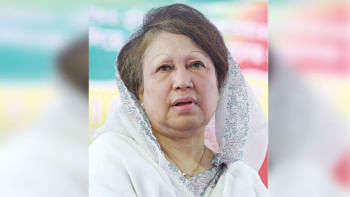Rate of stimulus disbursement disgraceful

We are shocked that the government has spent only about 0.5 percent of a Tk-1,500-crore stimulus package unveiled in 2020 for the laid-off workers of export-oriented apparel and leather factories. The programme was launched with money from the European Union and Germany in October 2020, amid a global outcry that around a million Bangladeshi workers had already been fired or furloughed due to cancelled or reduced orders from international brands and retailers, according to a survey of factory owners by the Penn State Center for Global Workers' Rights. It is thus inconceivable that, despite the urgent and bleak situation on the ground, so little of the funds has been disbursed over the last one and a half years.
What is even more staggering is the reason cited by the sources behind such a slow disbursement: apparently, the labour ministry is yet to finalise a list of workers eligible for the benefits. The director general of the Department of Labour claims it is "difficult to find such workers." We wonder: Why is it such a mammoth and impossible task to find eligible workers? Do the export-oriented factories, which are supposed to keep extensive records for their auditors and suppliers—or the owners' associations, for that matter—not have documentation of the workers who were laid off? Do the labour unions not have a list of aggrieved workers? Or does the DG mean that no workers were actually laid off during the Covid-19 pandemic?
It isn't just eligible factory workers that the government can't locate. In 2020, the government took up a Tk-2,500-crore scheme to distribute free food among the poor people in April-June. But it is yet to spend two-thirds of the money, because they can't find people eligible for the benefits. Meanwhile, seven other stimulus schemes launched in 2020 have seen little progress. Only 60 percent of the money has been spent as of November last year.
What exactly are we missing? According to various estimates, the fallout from the pandemic created somewhere between 17.5 and 20 million new poor in Bangladesh in 2020 alone. The second lockdown in the country pushed an estimated 32 million people into poverty, according to a survey conducted between April 2020 and August 2021 by the Power and Participation Research Centre (PPRC) and Brac Institute of Governance and Development (BIGD). We can quote more statistics to highlight the growing desperation of lower-income people, but the government, we assume, is well aware of the depressing data. What we demand from various government agencies is an explanation of why they have failed so miserably to reach the people they were supposed to support. If our agencies are so ill-equipped to disburse the funds, why announce stimulus packages in the first place?
The government's performance in this regard has been embarrassing, and we urge the authorities to immediately look into the lacklustre attitude of its implementation agencies and take steps to ensure that the funds reach the deserving beneficiaries.

 For all latest news, follow The Daily Star's Google News channel.
For all latest news, follow The Daily Star's Google News channel. 



Comments